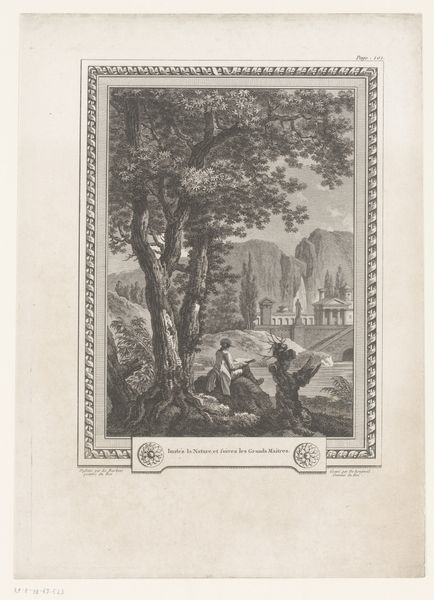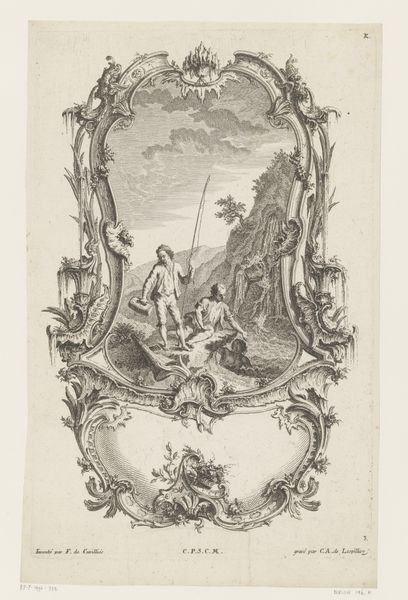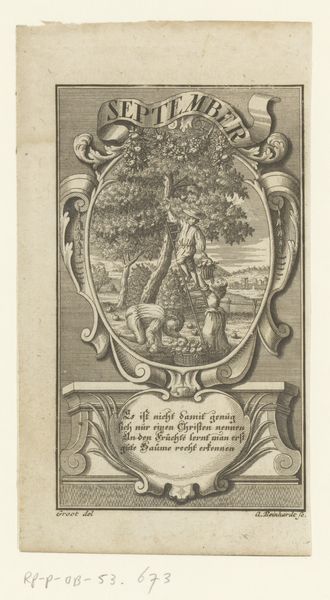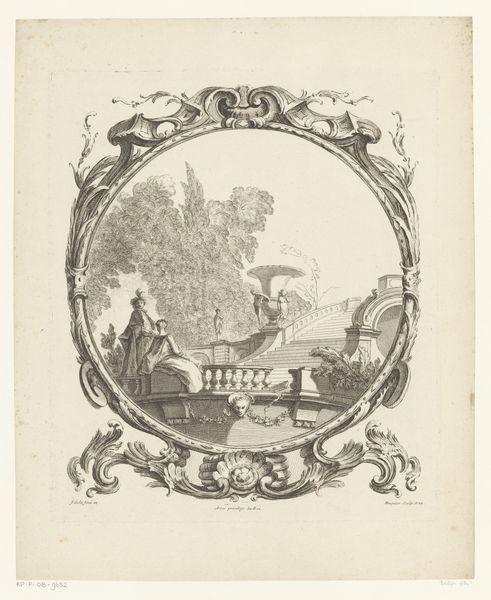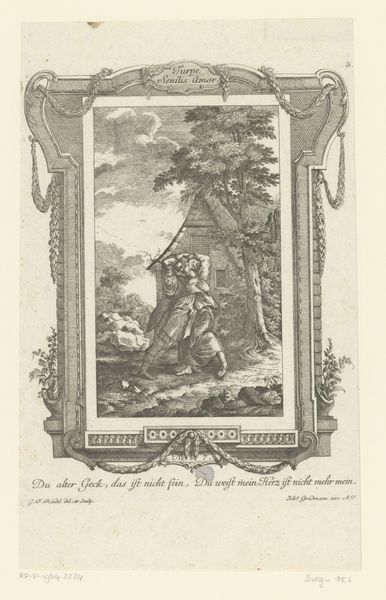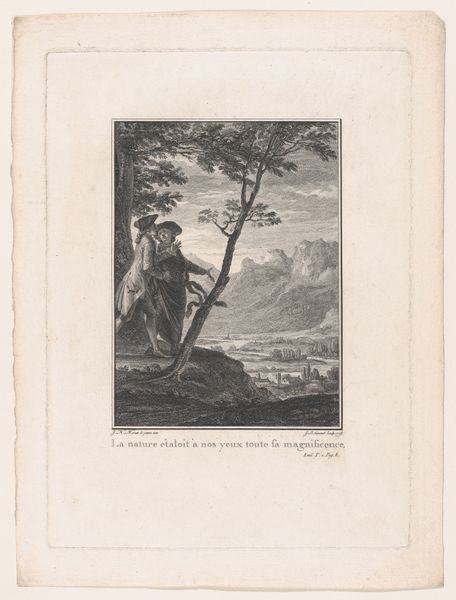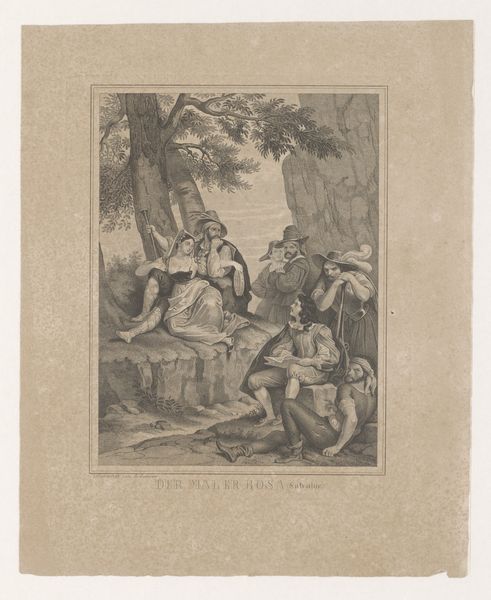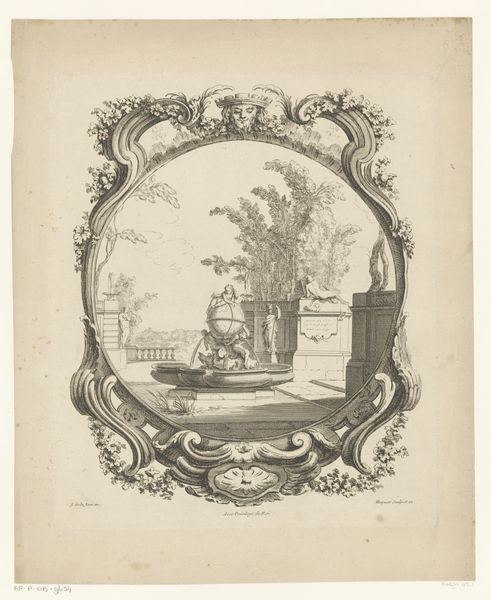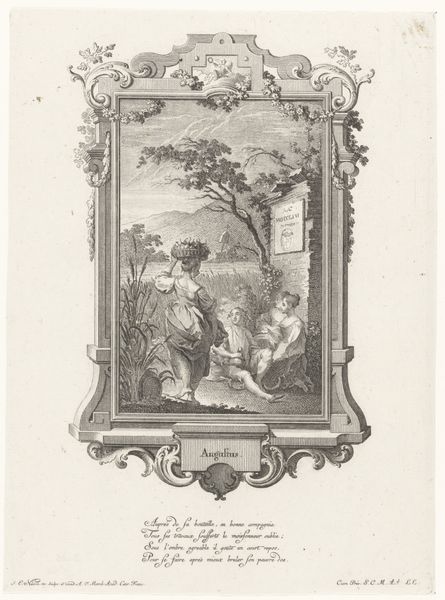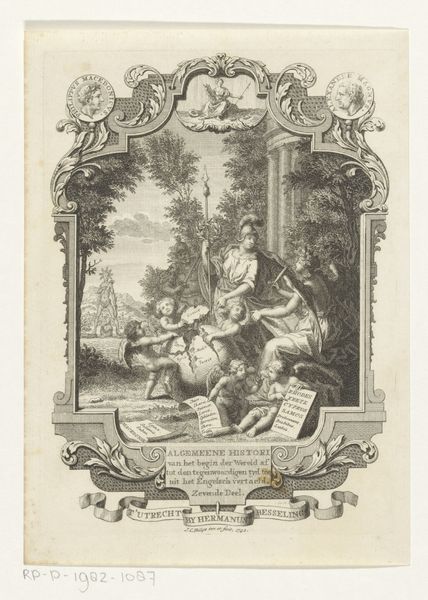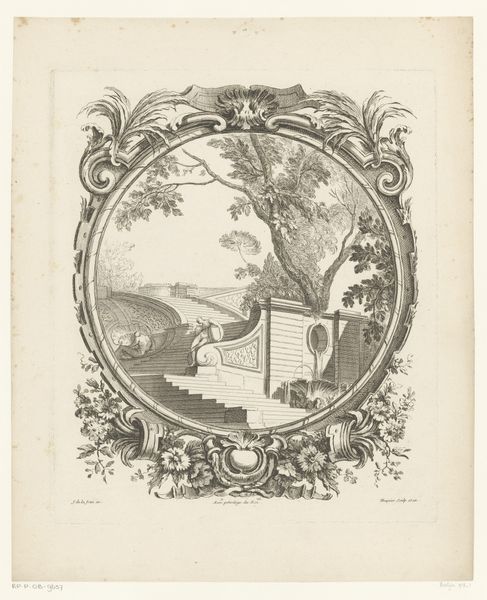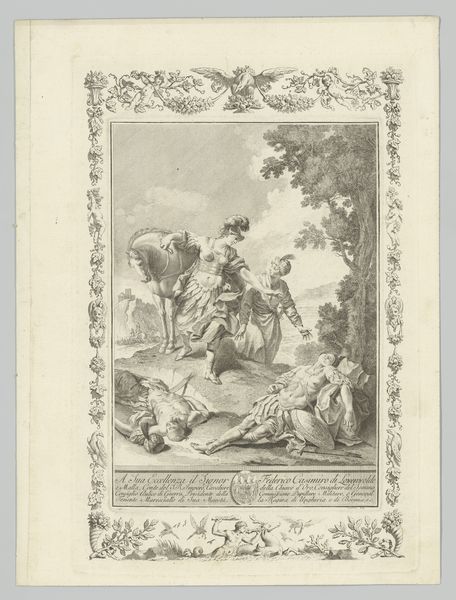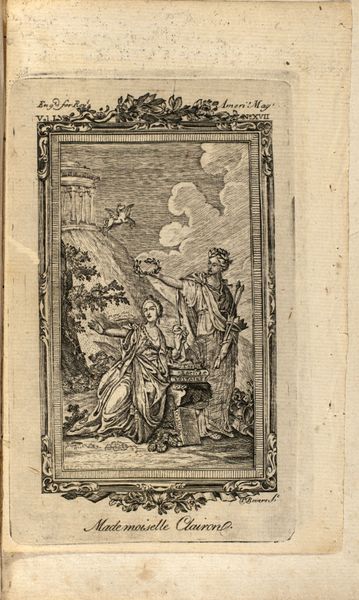
Ontmoeting tussen twee Europeanen en een oorspronkelijke bewoner van Noord-Amerika 1772
0:00
0:00
print, engraving
# print
#
figuration
#
engraving
Dimensions: height 234 mm, width 174 mm
Copyright: Rijks Museum: Open Domain
Editor: This print, "Ontmoeting tussen twee Europeanen en een oorspronkelijke bewoner van Noord-Amerika" from 1772 by Caspar Jacobsz Philips, depicts a meeting in a New World setting. I’m immediately struck by how carefully the composition is organized, almost like a stage set, with these European figures centrally placed and prominently lit, with a more 'rustic' looking indiginous figure facing away. What can we gather from that compositional choice? Curator: That’s an excellent observation. It highlights the power dynamics inherent in such encounters during that period. Look at the details—the European figures are formally posed, seemingly engaged in commerce, but the scene itself is heavily mediated, presented within this decorative border which signals "Europe." Consider the print’s potential audience. What values are being reinforced by presenting this “encounter” as a structured transaction within a European framework? Editor: So it’s less about a true exchange and more about projecting a European ideal onto this landscape and its inhabitants. The surrounding details, those little circular vignettes, they all reinforce the dominance of that European worldview. Curator: Precisely. The imagery is circulating within Europe; its intended audience is largely European. The seemingly neutral act of depicting this encounter serves to legitimize and normalize colonial enterprises. It presents a very specific and politically motivated reading of a very complicated exchange, in other words. Notice how the Indiginous figure is turned away as if lacking agency. Editor: It's really unsettling to consider how this seemingly benign genre scene functions as a form of cultural propaganda. The seemingly “realistic” landscape just masks those dynamics. Curator: Yes, what appears to be simply a genre or history painting becomes a powerful statement on cultural dominance. This kind of image, widely disseminated, contributed to a broader justification for colonial activities. Editor: I hadn’t considered it that way. Looking at the piece now, it feels less like a depiction of reality and more like a reinforcement of an existing power structure. Thanks so much.
Comments
No comments
Be the first to comment and join the conversation on the ultimate creative platform.
